Into the Void (2)
By:
July 10, 2010

When you think about the archetypal science fiction story, chances are you think of the bold explorer, setting foot on a new-found planet in the name of a secure home-world. But possibly the most pervasive narrative in science fiction is actually the story of refugees. They flee from planetary destruction, war, or just from overcrowding and ecological crapitude.
The alien visitor from a doomed world:
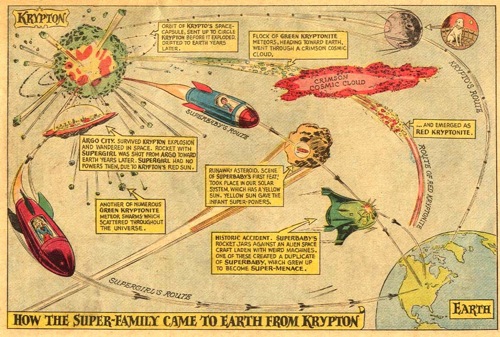
The most famous refugee in science fiction is probably Superman, who gets sent to safety when his home planet Krypton is destroyed. It’s no coincidence that Superman is also the poster boy for assimilation — his “real” family is the Kents of Kansas, and he thinks of himself as an American. He gets to live the refugee’s dream, being totally accepted into a prosperous new world — plus he’s physically and mentally superior to everyone else around him. He’s the embodiment of the melting pot, even as he has the power to melt you. (And of course, his creators Siegel & Schuster were the sons of poor Jewish immigrants from Eastern Europe, mainly Lithuania and Ukraine.)
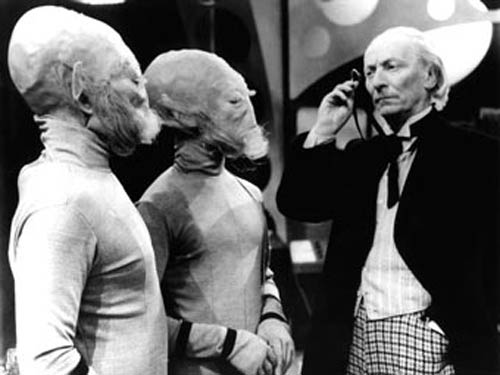
Doctor Who, meanwhile, has the same alien-world story as Superman, but without the assimilation. The Doctor, in the early episodes from 1963, drops hints about being on the run and in hiding, but doesn’t explain further. The show’s creators had a vague sense, originally, that he was fleeing a space war. But by the time it’s explained in 1969, the explanation is much more benign: the Doctor’s species are dicks. (No, not Terrance Dicks. Just dicks.) It’s not until the show’s 42d birthday that we get back to the idea that he’s fleeing a space war (upgraded to a time war.) And his planet has been destroyed, just like Superman’s. But like I mentioned, he doesn’t assimilate with Earth/British culture — even though he constantly takes on weird British affectations like jelly babies or cricket, they only make him seem like more of an outsider. He’s like those Indian immigrants in the TV show Goodness Gracious Me, who anglicize their names and try to be more British than everyone else, only to look more out of place than ever. In many ways, the Doctor is the anti-Superman.
The protagonist who’s fleeing war or genocide:
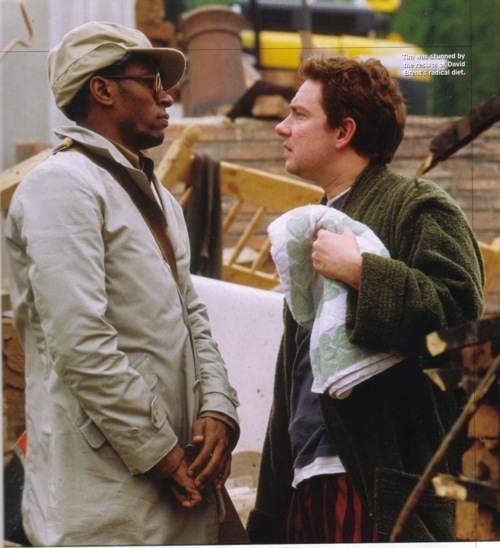
There are also tons of characters who flee a doomed or destroyed Earth, including Arthur Dent in the Hitchhiker’s Guide To The Galaxy series. And John Varley’s novels frequently take place in a universe where humans have been forced to flee an Earth invaded by aliens, and have colonized the rest of the solar system as a result.
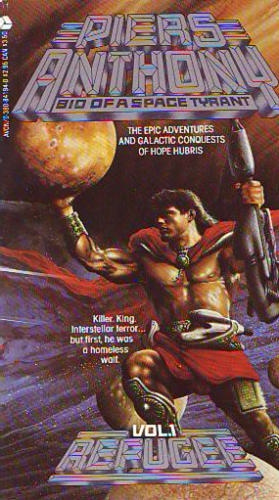
And then there’s Hope Hubris, the hero of Piers Anthony’s Bio Of A Space Tyrant series. As the first book’s title, Refugee, suggests, Hubris starts out as a humble refugee from the moon Callisto, fleeing to Jupiter, where his family gets killed horribly. This starts him on his path towards becoming the “Tyrant of Jupiter.”
The rag-tag fleet:
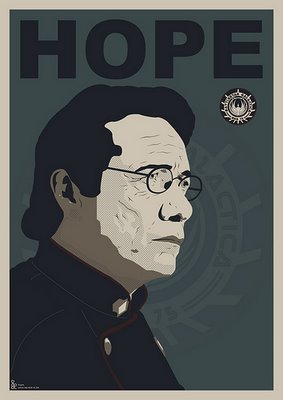
There are plenty of stories in which a straggling mob of people flees from a disaster or massacre in space. Maybe the most critically acclaimed SF show right now — if not the most popular — is Battlestar Galactica, where the Cylons drive the humans out of their homeworld not once, but twice: on Caprica, and then on New Caprica. At the end of season three, Lee Adama makes a huge speech in which he says this has changed humanity from a civilization to a “gang,” on the run and doing whatever it takes to survive.
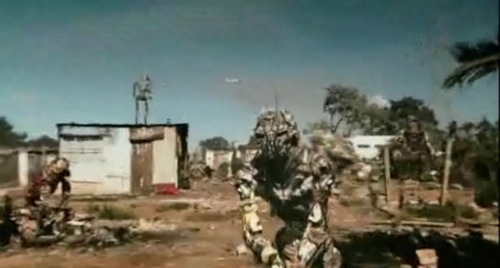
Less organized rabbles also turn up, fleeing wars or political unrest, in books like C.J. Cherryh’s Downbelow Station, where swarms of refugees pack into Pell Station in the wake of conflict between the Earth Company and outer stations. And a mob of refugees from a disaster that befalls the H9 colony swarms aboard a cruise ship, only to be exploited by the media, in Eric Idle’s The Road To Mars. The TV show Babylon 5 is also full of refugee crises, like the people fleeing the Vorlon attack on Ventari III in “Falling Towards Apotheosis.” (We also see a ship full of refugees under attack in the first regular episode, “Midnght On The Firing Line.”)
Eco-refugees or disaster survivors on Earth:
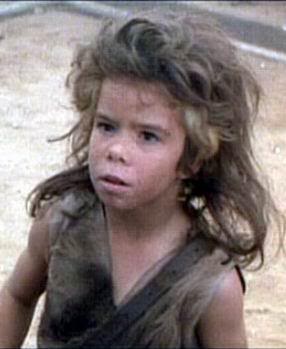
Every eco-disaster narrative or post-apocalyptic story includes some kind of refugee motif, with people fleeing the destroyed cities or trying to find a safe haven. Like The Day After Tomorrow, The Postman, Waterworld, or Road Warrior. Or Steven Gould’s novel Blind Waves. The Martian attacks in War Of The Worlds spawn a huge fleet of refugee ships running away from the carnage. Islanders flee rising sea levels, only to drown or wind up in horrible refugee boat camps, in the 2002 young adult novel Exodus. And of course, there are tons of refugees from the collapsing nations of the world, seeking sanctuary in the U.K., in Children Of Men. Not to mention the Raft of refugees organized by telecommunications magnate L. Bob Rife in Neal Stephenson’s Snow Crash.
One of the most arresting moments in the TV show Jericho is when our heroes find the remains of a refugee train a mile wide, made by people fleeing the frozen north. The refugees have left their icy dead where they lay. (Not to mention the whole gaggle of refugees who settle in Jericho, only to face expulsion again.)
Survivalists:
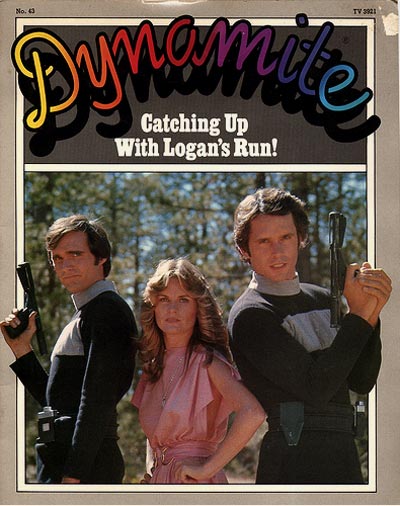
The survivalist narrative is a huge part of science fiction. Robert Heinlein not only wrote the novel Farnham’s Freehold about people surviving a nuclear war, but according to the source of all lies, he also wrote “How To Be A Survivor” and other essays on surviving nuclear war. Frederik Pohl deals with similar themes in his story “Fermi And Frost.” Also, Larry Niven and Jerry Pournelle write about a group of survivors barricading themselves into a mountain retreat after a deadly comet strike, in Lucifer’s Hammer. Plus there’s The Survivors, the TV show Terry Nation made between his work on Doctor Who and Blake’s 7 (which is also a refugee show, sort of.)
And then there are the narratives about people going on the run from repressive regimes. Like Logan’s Run, where Logan flees the non-stop beautiful-people orgy where they kill you when you reach 30, in search of the mythical Sanctuary. (And in the Logan’s Run TV series, he’s just on the run, every week, with a rogue android. In Roger McBride Allen’s The Ring Of Charon, Marcia MacDougal can only escape from the repressive Naked Purple movement, which has taken over a lunar penal colony, by being declared a refugee when her house burns down.
Fleeing from the future:
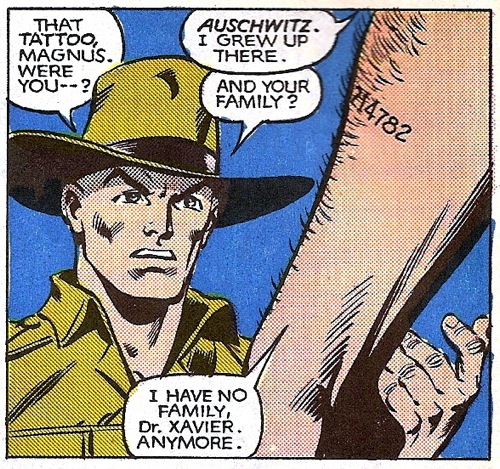
Finally, there are refugees in time — sort of like the Doctor, except they’re fleeing a particular oppressive future through time travel. Just type “refugee from the future” into Google (with the quotation marks) and you get a bunch of weird stories — including various X-Men who have journeyed back to our time to escape one of those Mutants-in-concentration-camps dystopian futures.
History is full of mass evacuations and displacements, and we’ve gotten pretty used to the sight of streams of humans struggling across an unforgiving landscape with whatever they can carry, trying to escape from something or other. But it seems pretty likely the 21st century will see more refugee crises than ever before, as the number of humans on the planet continues to skyrocket and there are more ecological disasters and wars over scarce resources. There will be more and more refugees — possibly including you.
Because we dig the sci-fi blog io9, HILOBROW’s editors have curated a collection of critiques by one of our favorite io9ers: Charlie Jane Anders. This is the second in a series of ten. This post was first published on May 16, 2008.
